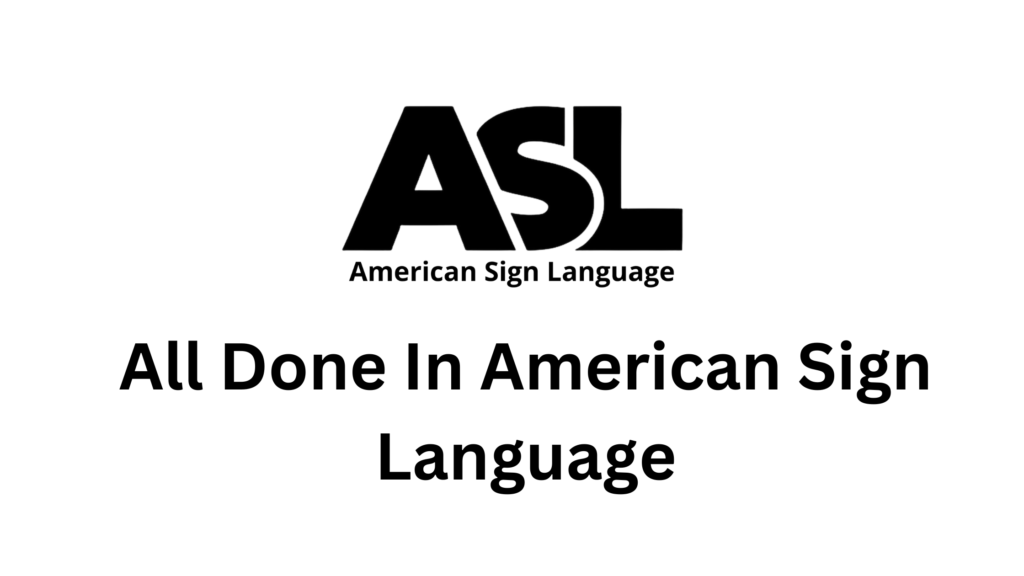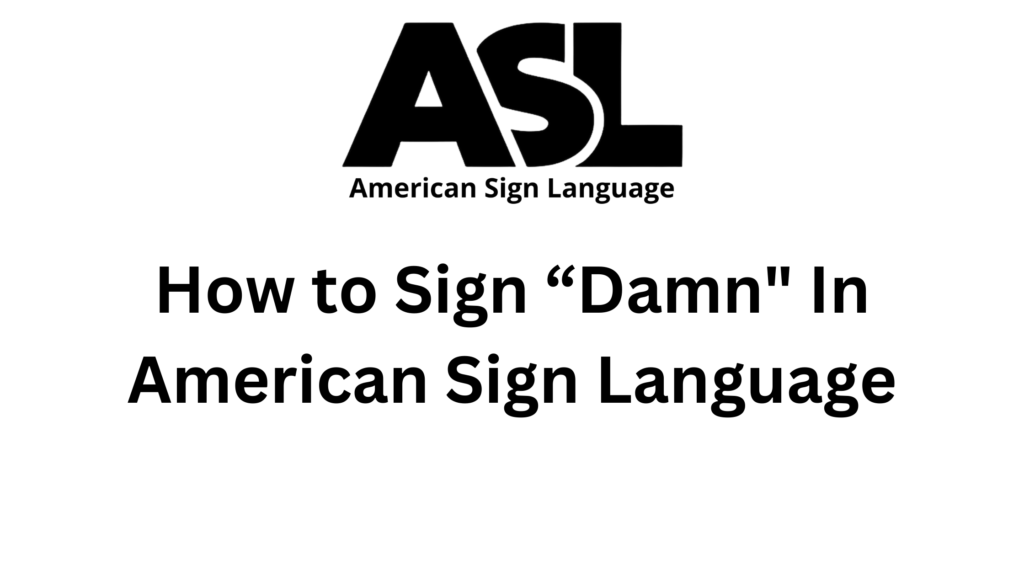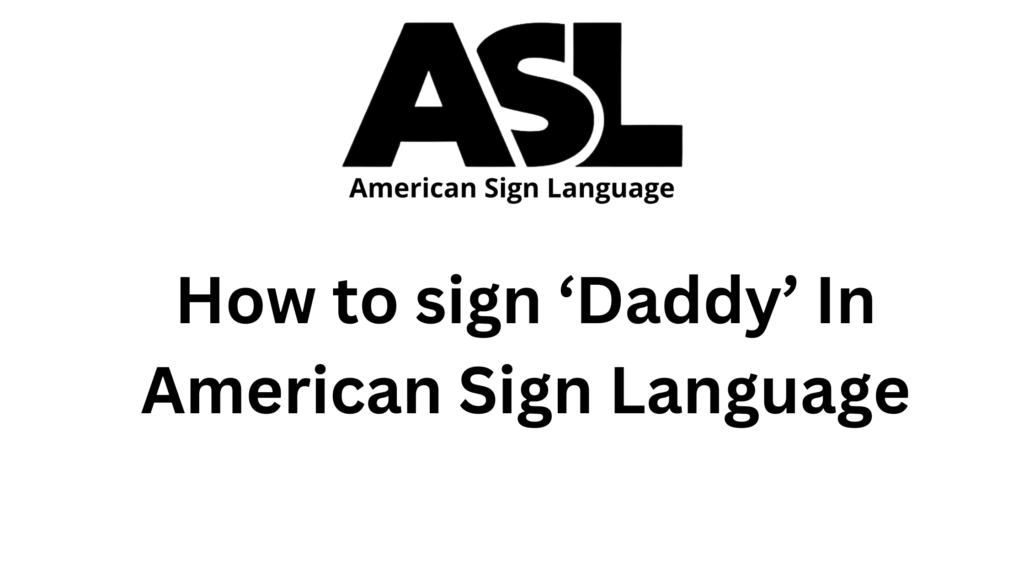Introduction to “daily” in ASL
Learning how to sign “daily” in American Sign Language (ASL) is a great way to start understanding the basics of this expressive language. “Daily” is a common word and useful for many conversations. By learning to sign “daily,” you will improve your communication skills in ASL. This guide will help you learn to sign “daily” step-by-step. We will cover the handshape, orientation, facial expressions, and more. Let’s begin our journey into the world of ASL.
Basic Handshape and Orientation of “daily”
In ASL, each sign has a specific handshape and orientation. For “daily,” the handshape is crucial. You will use a single hand to make this sign.
- Handshape: Start with an open hand. Then, make a fist with your thumb extended outward.
- Orientation: Your fist should face your body. The thumb will touch your cheek.
It’s important to get the handshape and orientation right. This ensures that your sign is clear and understood by others. Practice making this handshape and orientation in front of a mirror. It helps to see how you are doing and correct any mistakes.
Step-by-Step Signing Instructions for “daily”
Let’s break down the sign for “daily” into simple steps. Follow these instructions carefully.
- Start Position: Raise your dominant hand and make a fist. Extend your thumb outward.
- Placement: Bring your thumb to the side of your cheek.
- Movement: Move your fist back and forth. The motion should be small and repeated, touching your cheek each time.
- End Position: The movement stops back at the starting point, with the thumb touching the cheek.
Practice this motion several times. Repeat the movement smoothly and consistently. Make sure your thumb touches your cheek with each motion. This repeated movement signifies the regularity of “daily” activities.
Facial Expressions and Non-Manual Markers for “daily”
Facial expressions play a significant role in ASL. They add meaning and context to signs. For “daily,” your facial expression should show routine and regularity.
- Expression: Keep a neutral or slight smile. This indicates that the activity happens regularly and without stress.
- Non-Manual Markers: Slight head nods can accompany the sign. This reinforces the regularity of the action.
Remember, in ASL, your face is as important as your hands. Practice using facial expressions along with the hand movements. This helps convey the full meaning of “daily.”
Common Variations and Regional Differences for “daily” Sign Language
Like any language, ASL has regional variations. Different areas might have slight changes in how they sign “daily.” Here are some common variations:
- Movement Speed: In some regions, the movement might be faster or slower. Adjust your speed based on who you are communicating with.
- Hand Placement: While the standard sign places the thumb on the cheek, some might place it slightly lower or higher.
- Facial Expressions: Some regions might use different facial expressions to show “daily.” Observe and mimic the expressions used by native signers in your area.
These variations are natural and part of language evolution. Be open to learning and adapting to these differences.
Practicing and Politeness for “daily” Sign Language
Practice is key to mastering any sign. Here are some tips for practicing “daily”:
- Repetition: Practice signing “daily” multiple times a day. Consistent practice helps reinforce muscle memory.
- Mirror Work: Use a mirror to check your handshape, orientation, and facial expressions. This helps you self-correct.
- Peer Practice: Sign with friends or family who know ASL. They can provide feedback and help you improve.
- Video Recording: Record yourself signing “daily.” Watch the recordings to spot any mistakes.
When practicing with others, remember to be polite. Ask for feedback respectfully. Thank those who help you improve. Politeness in practice sessions creates a positive learning environment.
Using “daily” in Everyday Situations
Knowing how to sign “daily” is useful in many everyday situations. Here are some examples:
- Routines: Sign “daily” when talking about your daily routines, like brushing your teeth or going to work.
- Schedules: Use “daily” to discuss schedules, like daily meetings or classes.
- Habits: Sign “daily” when talking about habits, like daily exercise or reading.
Using “daily” in these contexts helps you become more fluent in ASL. It also makes your conversations more dynamic and accurate.
Additional Signs for “daily”
Expanding your vocabulary is important in ASL. Here are some additional signs related to “daily”:
- Morning: Start with your non-dominant arm bent at the elbow, hand open. Place your dominant hand, also open, with the palm facing your body. Move your dominant hand up.
- Afternoon: Place your non-dominant arm horizontally across your body. Place your dominant arm on top, forming a right angle. Move your dominant hand down slightly.
- Night: Place your non-dominant arm horizontally across your body. Place your dominant hand, with fingers together and pointing downward, on top. Move your dominant hand down.
Learning these signs will help you talk about daily activities in more detail.
Cultural Considerations of “daily” in ASL
Understanding the culture behind ASL is important. Here are some cultural considerations for “daily”:
- Deaf Community: ASL is the primary language of the Deaf community. Respect and understand the cultural nuances of this community.
- Context: Use “daily” in appropriate contexts. Understand the importance of routine and regularity in the Deaf community’s communication.
- Politeness: Always be polite and respectful when signing. Good manners go a long way in any language.
Learning about the cultural aspects of ASL enriches your understanding and helps you communicate more effectively.
Conclusion of “daily”
Signing “daily” in ASL is a useful skill. It helps you talk about routines, schedules, and habits. By learning the handshape, orientation, facial expressions, and cultural aspects, you can sign “daily” accurately. Practice regularly and use it in everyday situations. This guide has given you the tools to start signing “daily” with confidence. Keep practicing and expanding your ASL vocabulary. For more resources and guides, visit our homepage. Happy signing!








